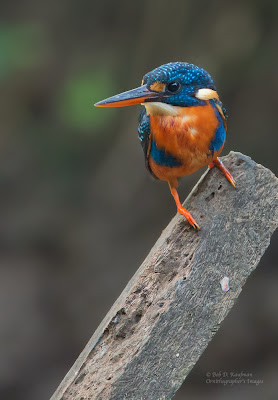Last January, 2013, word got around the birding community that Green-faced Parrotfinches were seen at a mountainside in Samal, Bataan province. The person who saw them was Stinson, an employee of Dr. Joey Soriano, who in turn informed his co-members at the Wild Bird Club of the Philippines (WBCP).
This species is very seldom observed and is classified as uncommon and vulnerable according to Birdlife.org. Prior to this year, this Philippine endemic was last seen in 2008 at Alcoy Forest in the island of Cebu. Although mainly a resident of Luzon, there were several sightings in the islands of Panay and Negros as well. It has been said that before World War II, these colorful finches were captured by the thousands and sold on the streets of Manila with some even shipped to San Francisco for the caged bird trade. (source: birdlife.org)
Scientists concluded that this recent irruption (a sudden increase in number) was due to the flowering bamboo trees in the mountains of Bataan.
About 5 inches (12-13 cm) in length, these birds are entirely green except for bright red upper tail coverts and tails. Females are similarly colored and the only distinguishing characteristic is that they have shorter tails and show some buff on their bellies and vents. The bills of both male and female are thick and dark grey in color.
Needless to say, such rarity brought birders to Bataan with the hope of seeing and even photographing the Green-faced Parrotfinches. Our first attempt on January 21st was a heartbreaker. We saw about seven parrotfinches but they were across a ravine that even with my long lens I still was unable to get a good photo.
However, luck was with us on our second trip five days later. The birds were so near that at times I had to step back to a get full view of them.
For the stories about these two trips to Bataan, please see here and here.
Canon 7D, 300mm+1.4X (420mm)
ISO-400, f6.3, 1/400
handheld
Canon 5D2, 100-400 @ 400mm
ISO-640, f5.6, 1/400
handheld
Canon 7D, 300mm +1.4X (420mm)
ISO-400, f7.1, 1/400
handheld
Greetings
Unless otherwise specified very little post processing is done to the images - cropping, some sharpening, adjusting the brightness/contrast settings, adjusting the saturation and occasionally lightening or darkening.
These photographs are the personal properties of Bob & Cynthia Kaufman. Please do not reproduce, copy, download or print without a written permission from us.
We may be contacted at ornithographer@yahoo.com
Thanks for viewing our blog.
Wednesday, November 20, 2013
Thursday, November 7, 2013
Indigo-banded Kingfisher - Ceyx cyanopectus
Villa Escudero in Tiaong, Quezon province is one of the places where sightings of this uncommon Philippine endemic is almost guaranteed. Lately, however, a very confiding couple has been seen regularly at the La Mesa Ecopark in Quezon City. Both male and female were so oblivious of its "audience" that birders and bird photographers had a heyday taking pictures of both.
Indigo-banded Kingfishers are small (about 5-1/2 inches) brightly colored birds that inhabits forest streams and ponds where they hunt for tiny fish and insects. Their distinguishing marks are blue bands across their breasts, two for the male (and forming a heart shaped rufous center) and one for the female. They are found in Luzon and Mindoro and another subspecies in Negros, Panay and Cebu.
Indigo-banded Kingfisher - Ceyx cyanopectus - Male
La Mesa Ecopark, October 15, 2013
Canon 5D Mk III, 500mm+1.4X, half gimbal on tripod
ISO-800, f5.6, 1/30
Indigo-banded Kingfisher - Ceyx cyanopectus - Female
La Mesa Ecopark, October 26, 2013
Canon 5D Mk III, 500mm+1.4X, half gimbal on tripod
ISO-3200, f5.6, 1/50
Indigo-banded Kingfishers are small (about 5-1/2 inches) brightly colored birds that inhabits forest streams and ponds where they hunt for tiny fish and insects. Their distinguishing marks are blue bands across their breasts, two for the male (and forming a heart shaped rufous center) and one for the female. They are found in Luzon and Mindoro and another subspecies in Negros, Panay and Cebu.
Indigo-banded Kingfisher - Ceyx cyanopectus - Male
La Mesa Ecopark, October 15, 2013
Canon 5D Mk III, 500mm+1.4X, half gimbal on tripod
ISO-800, f5.6, 1/30
Indigo-banded Kingfisher - Ceyx cyanopectus - Female
La Mesa Ecopark, October 26, 2013
Canon 5D Mk III, 500mm+1.4X, half gimbal on tripod
ISO-3200, f5.6, 1/50
Subscribe to:
Posts (Atom)




